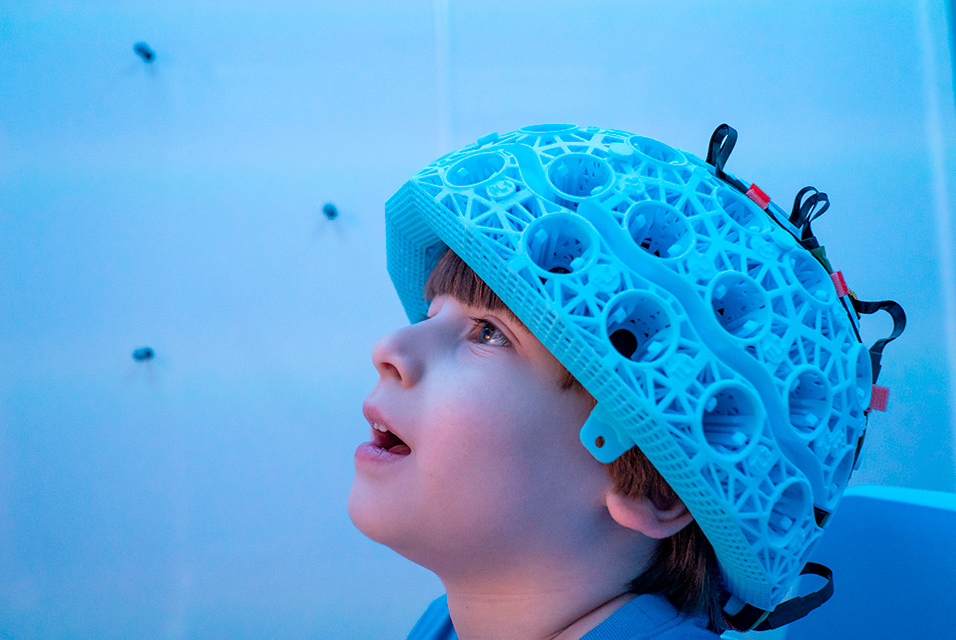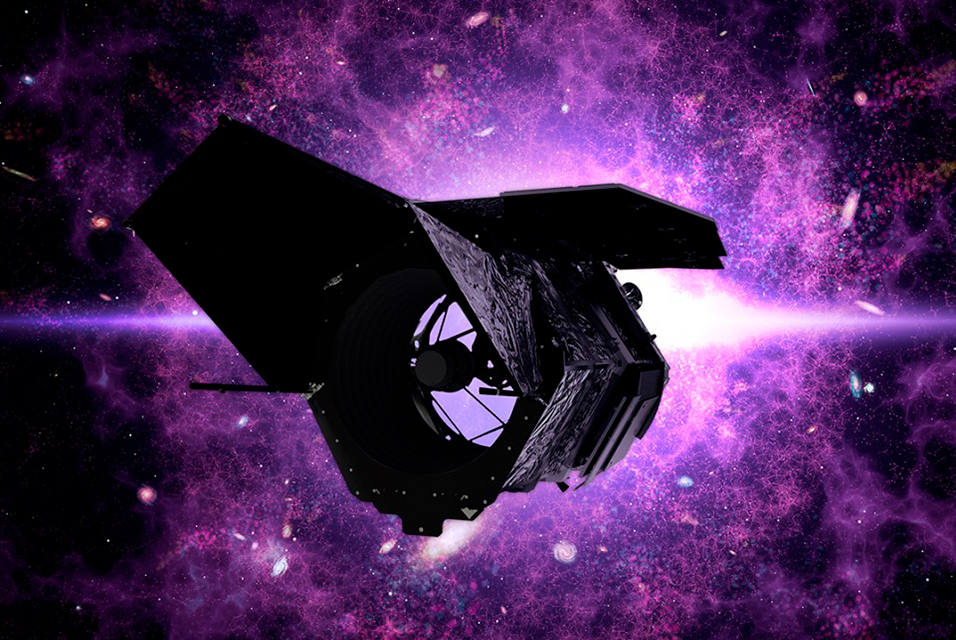NOTTINGHAM.- Children with epilepsy will now have access to a revolutionary wearable brain imaging system developed at the
University of Nottingham that will improve how the condition is diagnosed and treated.
The University of Nottingham and spin out company Cerca Magnetics have collaborated with national charity, Young Epilepsy, as well as world leading clinicians and scientists at University College London, to revolutionise the diagnostic experience for children with the condition by introducing the world’s first clinical wearable MEG (Magnetoencephalography) brain scanning system to its Health and Research Centre in Surrey.
Magnetoencephalography (MEG) is an existing diagnostic tool, which measures the changes in magnetic field generated by neuronal activity in the brain. This activity occurs naturally and the whole scan is completely non-invasive. A MEG study is recognised as one of the most advanced methods of recording and evaluating brain function and its use in epilepsy is well established. However, traditional MEG scanners are optimised for adults and are of limited use in children. Moreover, conventional MEG technology requires a child to stay completely still for long periods, or even be sedated during the scan.
The new wearable OPM-MEG system makes the scan far more accessible for children, especially those with complex health conditions, as it allows them to wear a helmet, move about within the magnetically shielded room and undertake activities whilst the scan happens. The helmet is adaptable to fit a child of any age. In addition, the new scanner offers higher sensitivity and spatial accuracy compared to the current ones.
The development offers clinicians a far better chance of capturing the rich data necessary to inform their decisions on the best possible treatment pathway for children with complex neurological conditions.
Rosemarie Pardington, Director of Integrated Care at Young Epilepsy explained: “At Young Epilepsy, we are always mindful that each and every child is different. The way their epilepsy affects them will be unique, and personal to them. Having a facility like the MEG is going to make an absolutely massive difference to the children and their families.
“The wonderful thing is that clinicians already recognise MEG as a reliable tool on which to base difficult decisions, such as surgery options, due to the richness and the reliability of the data. This takes it to a wearable form and makes it all a much easier experience for children.”
Professor Matthew Brookes who leads MEG research at the University of Nottingham, said: “As scientists, our primary aim is to have impact in the real world. Seeing this imaging system, originally developed in our lab, be used to help children with epilepsy is hugely exciting. The system in young epilepsy is the culmination of five years of physics development. However, even now we’re really only beginning to scratch the surface of what’s possible. We look forward to working closely with young epilepsy as we move forward, to realise benefits that this technology can have for young people with epilepsy.”
Currently, even the best centres that offer epilepsy testing are still hospital environments, where the patient has to stay still on a hospital bed and have electrodes attached directly to their head. 15 year old Samuel is a pupil at the Young Epilepsy St Piers College in Lingfield. He is, in many ways, is a typical teenager, who loves doing sports, watching TV and spending time hiding in his bedroom. He was first diagnosed with epilepsy when he turned four years old.
His mum Tracey welcomes the new system, she said: “A new helmet would also be fantastic for someone like Sam, as he is already used to wearing a protective hat, so it won’t feel too different to him. He loves to move around and having the freedom to do so could also make a big difference to the quality of the scan. Knowledge is power, so if this technology is able to pick up more information about our child’s condition, then it can really help us understand it more and as a parent you want to understand more, so that you can do more to help.”
Conventional MEG recordings are made inside a magnetically shielded room, which suppresses environmental magnetic noise. Rooms built for current MEG systems are very large and extremely costly, as they rely on multiple layers of expensive metal alloy for the shielding. In addition, conventional MEG systems rely on magnetic field detectors which must be cooled to -269°C in order to operate. The cooling process, which involves bathing the sensors in liquid helium, is extremely costly and is what makes conventional scanners so cumbersome.
OPM-MEG uses a different type of sensor - optically pumped magnetometers (OPMs), which don’t need cooling to work. In the new system the patient wears a comfortable helmet with sensors attached, meaning that the sensors are closer to the scalp. The helmet can be made to fit anyone, and crucially patients can move during the scan.
The OPM-MEG system also uses a new type of magnetically shielded room - the light Mu-Room developed by the project partnership and built by UK company, Magnetic Shields Ltd. The newly created room at Young Epilepsy is a fraction of the weight of the existing MEG rooms and doesn’t carry the expense of the traditional magnetically shielded rooms. This new development, coupled with the new sensors, will eventually offer a feasible, and affordable option for many hospitals.
The new technology is part of Young Epilepsy’s the newly constructed Diagnostic Suite that will offer world leading clinical neuroimaging technology in a comfortable and seamless environment for children and their families.
The Neville Childhood Epilepsy Centre in Lingfield, offers a unique range of health services, including an assessment and rehabilitation unit, diagnostic services and other outpatient clinics. All of these specialising in providing comprehensive health services for children and young people with epilepsy in a non-hospital setting. With this in mind, the new Diagnostic Suite has been specially designed to have intuitive, human and homely aesthetics - to welcome and reassure patients and their families. Alongside the OPM-MEG room, the suite includes EEG and telemetry rooms, a family room and a sensory garden, designed by a Chelsea Flower show 2019 Gold Medal winner, Alistair Bayford.
The new facilities will also be available for medical scientists, Ph.D. students and other researchers keen to explore the applications of this technology beyond childhood epilepsy, such as other areas of medicine and sports science.










